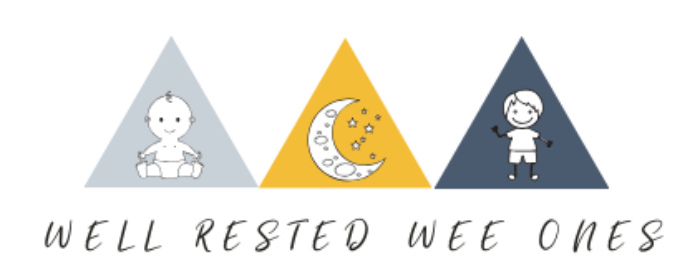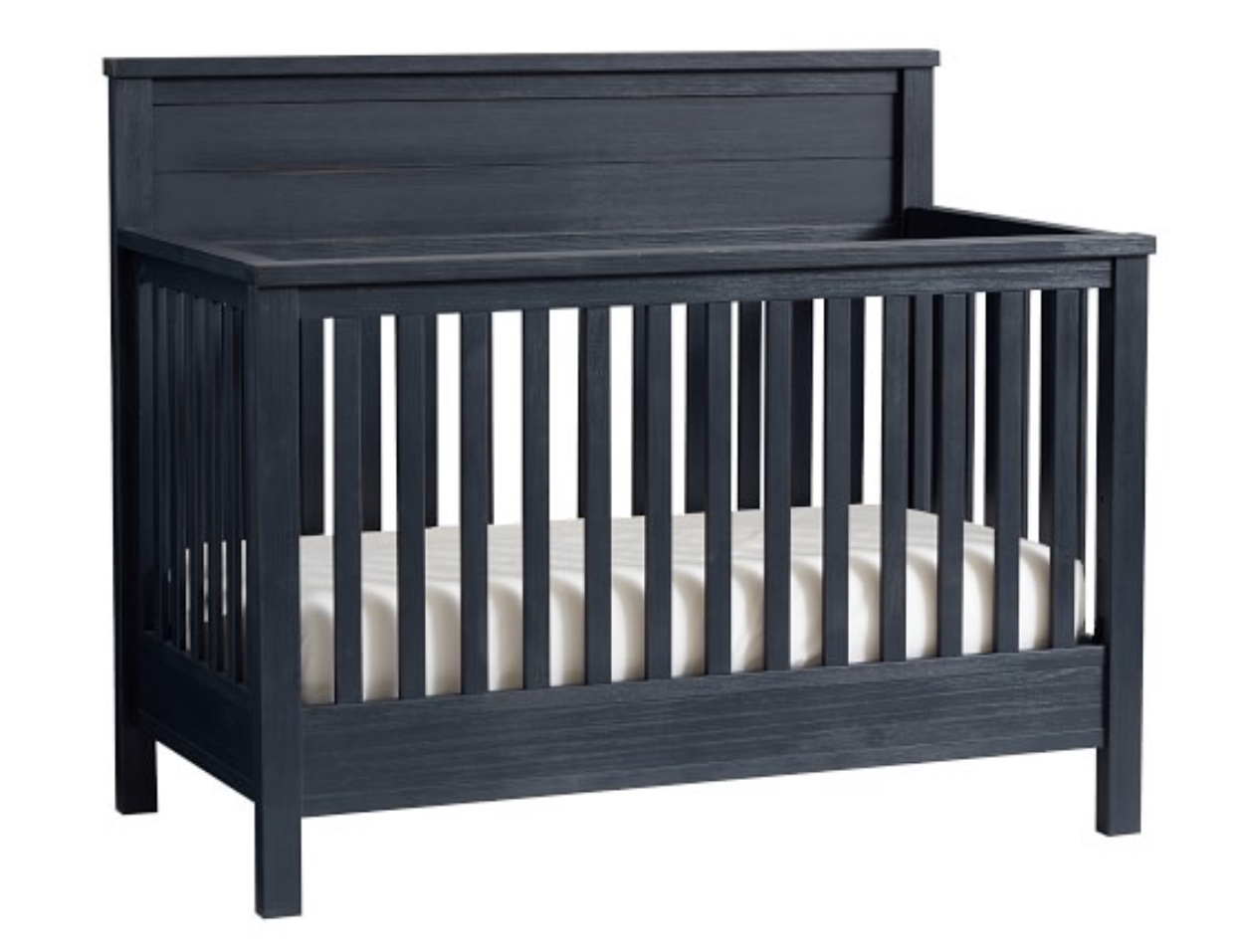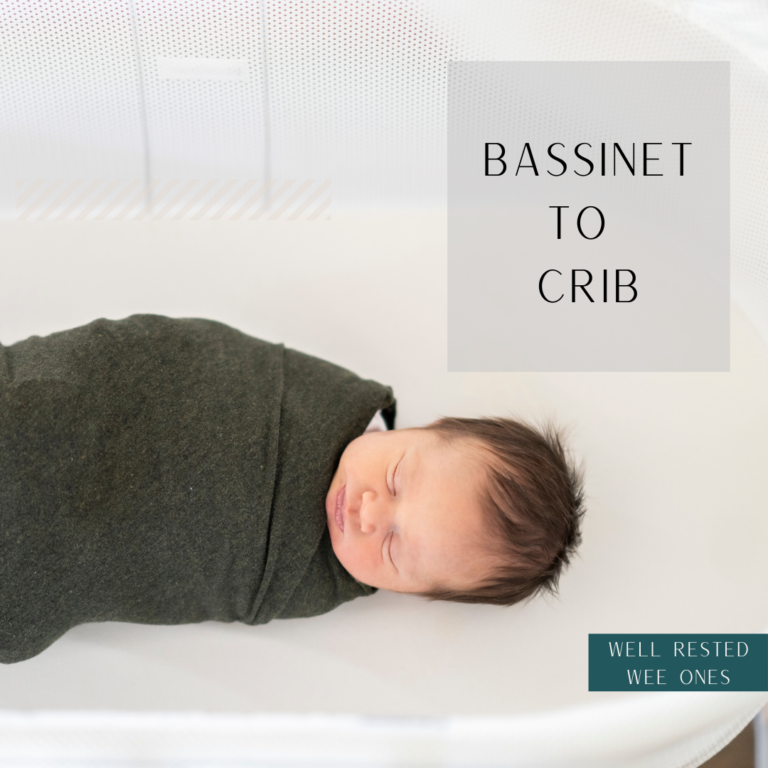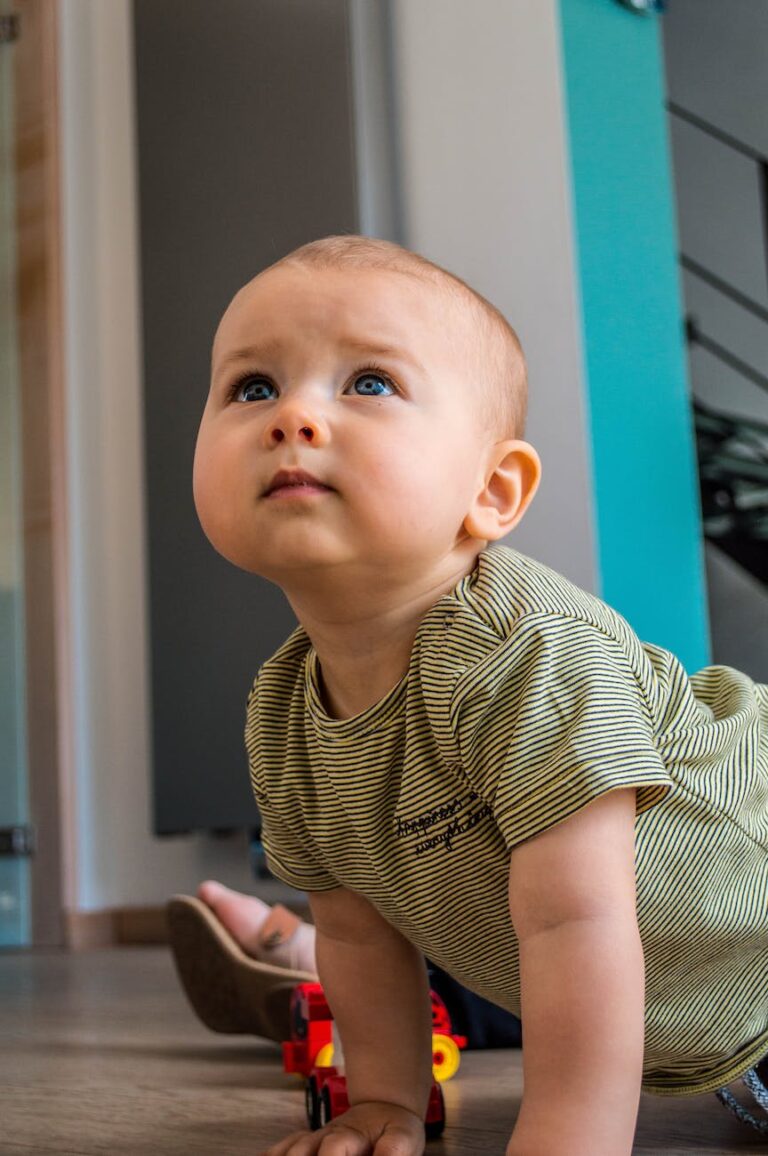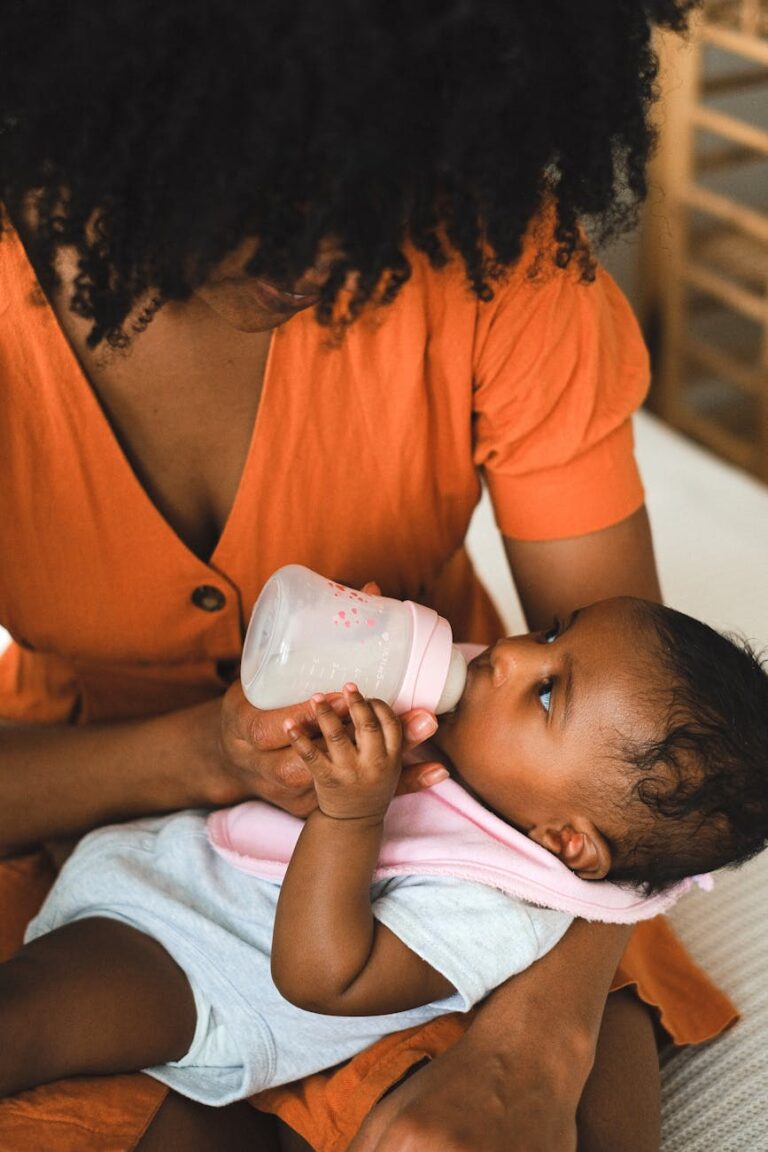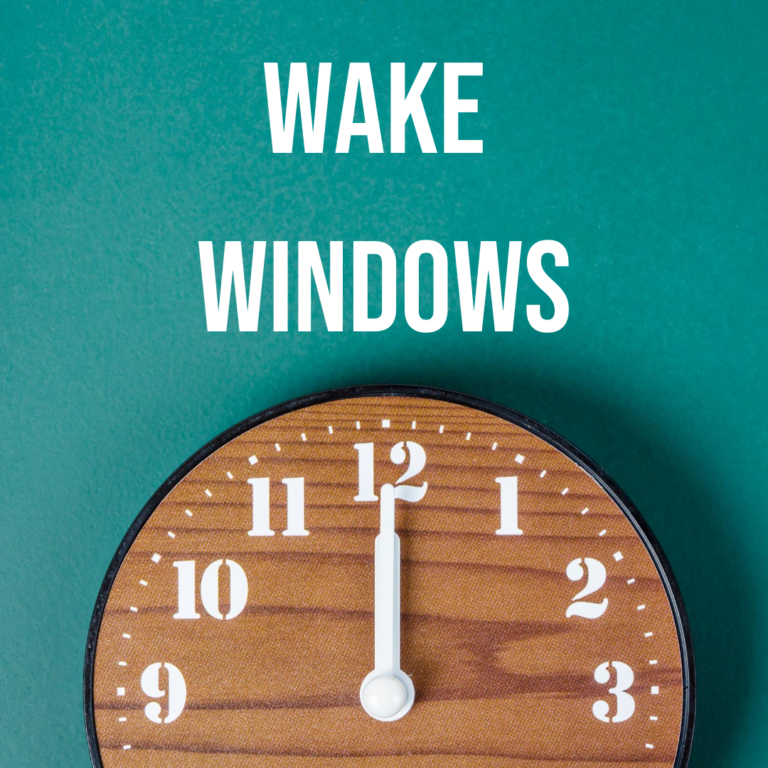Infant Safe Sleep Recommendations and Checklist
Whether you are expecting a baby, a new mama, or already have a couple of Wee ones around the home it’s important to learn about the current infant safe sleep recommendations. Everyone wants to have a great sleeper, but I also want you to have a safe sleeper!
The Safe to Sleep campaign was started in the 1990s to help reduce the risk of Sudden Infant Death Syndrome (SIDS.) Prior to this era, babies were commonly placed on their stomachs to sleep as well as with other objects in the crib. Although the cause of SIDS is unknown, a safe sleep environment is the best way you can reduce the risk.
Why is the back sleeping position so important?

The risk of SIDS is highest in the first 4 months of life. This is a time where your baby is not able to roll and independently lift and move their head side to side which can help protect their airway. Back sleeping does not put your baby at risk for choking, in fact, it may help to clear fluids due to anatomy. When your baby is sleeping and laying on their back the trachea (breathing pipe) sits on top of the esophagus (eating pipe). If anything is regurgitated or refluxed must work against gravity to be aspirated into the trachea. When your baby is sleeping on their stomach, anything that is regurgitated or refluxed will pool at the top of the trachea making it easier to be aspirated.
Why is Tummy Time so Important while awake?
Tummy time is so important to incorporate throughout your baby’s day due to all the time spent on their back for sleep. Tummy time helps to prevent flat head shape, promotes sensory development, improves motor skills and strengthens your baby’s neck, upper body, back, and core muscles. Practicing tummy time is also an important part of infant safe sleep recommendations. This strength will be used to learn how to roll both directions, sit up independently, crawl, pull to stand, and eventually walk! You can start incorporating tummy time into your baby’s daily routine starting on the first day you get home from the hospital! Start with short periods of time, a minute or two is plenty! Some babies will protest which is why it’s important to offer tummy time in different ways. Some great ideas include laying your baby on your tummy while you lay down and looking face to face, putting a mirror in front of them, using a water mat, using a baby pillow to prop them up. Tummy time should always be supervised. My 3-4 month sleep guide is FULL of helpful hints for tummy time strategies, rolling, and how to navigate these milestones when it comes to sleep.
What products are NOT safe for sleep?


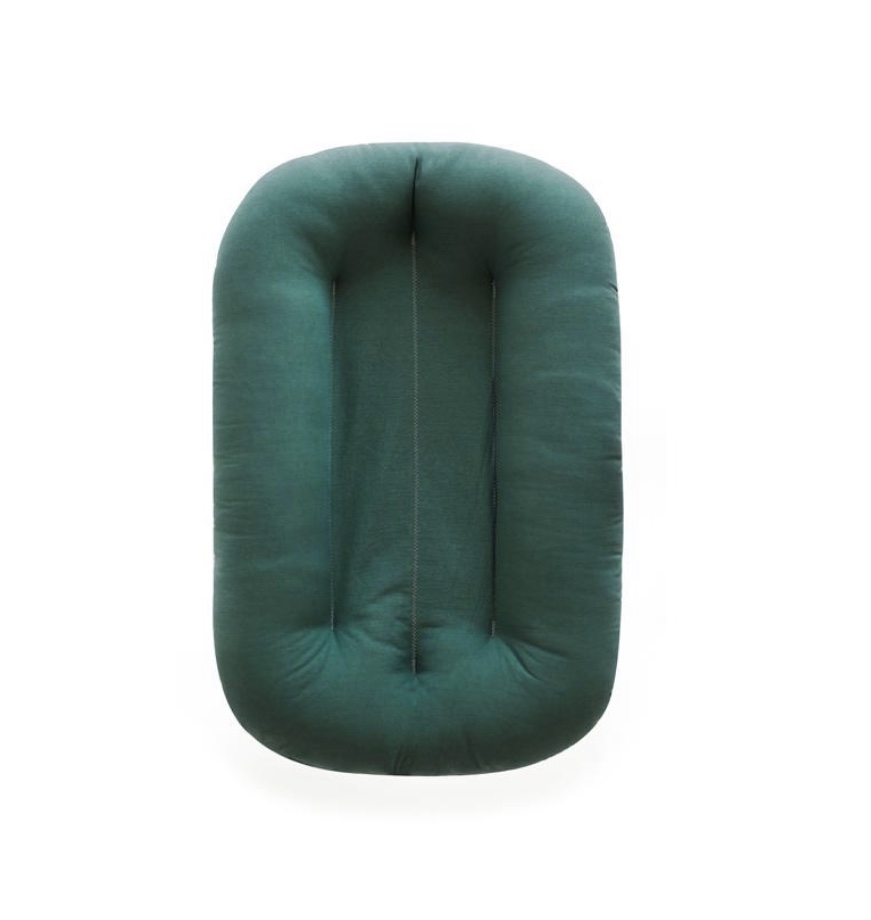
In April of 2019, Fisher-Price recalled all 4.7 million Rock and Play inclined sleepers due to more than 30 infant deaths. You know how many mom’s I know that used this product?! Too many to count, including myself in 2016 with my first baby for 3 months!! Then in October of 2019, Consumer Reports released an investigation finding soft-sided sleep beds and positioners linked to more infant deaths. There were at least 12 infant deaths between 2012 and 2018 due to using these types of products which include things like a Dock a Tot, Snuggle Me Organic, and Snuggle Nest. In December of 2019, Amazon, Walmart, Buybuybaby, and Ebay even went so far as to all say they wouldn’t sell inclined sleepers anymore! The bottom line here is no inclined sleep device or sleep positioner is safe for your baby to sleep in. Always remember the safe sleep ABC’s, Alone, On the Back, In Crib. Below is more information and a checklist based on current infant safe sleep recommendations!
Checklist for Infant Safe Sleep
Sleep Surface and Position
- Alone–No bedsharing
- Bare–No objects in the crib
- Placed on the back until 1 year old
- If your baby rolls to their tummy on their own it is okay to leave them in that position
- Firm mattress
- Flat position–No elevation– Even for reflux babies!
- Labeled as a crib, bassinet, play yard safe for sleep
- No positioners such as Dock a Tot, Snuggle Me Organic, Boppy
- Appropriate mattress height
- No drop-down side cribs
Crib Should Be Bare and Free Of
- Stuffed animals and soft toys
- Blankets
- Pillows
- Crib bumpers
- Monitors
- No objects within arm’s reach-such as windows, furniture, cords
Sleep Environment
- The temperature should be comfortable. A general temperature recommendation is 68-72 degrees Fahrenheit but will vary based on the climate you live in
- In general, your baby should be dressed in one more layer than you would be comfortable wearing in the same room
- If the baby is sweating, undress one layer
- If you are worried your baby may be cold, you can dress them in a wearable blanket.
Swaddles, Car Seats, and Devices
- Swaddling is recommended until your baby is able to roll over independently or breaking out of the swaddle-Usually by 3-4 months!
- Swaddles should be snug around the chest, but allow the hips to move freely. You should be able to easily slide a finger into the top of the swaddle
- It is safe to allow your baby to sleep in a car seat if you are driving as long as they are securely fastened into the car seat.
- If your baby falls asleep in the car seat or stroller, it is recommended to transfer them to a flat and safe surface once you arrive at your destination
Other things you can do to reduce the risk of SIDS
- The American Academy of Pediatrics recommends room sharing for the first 6 months of life
- Breastfeed as much and for as long as possible
- Attend all well-baby visits and receive immunizations
- Keep your baby away from second-hand smoke
- Offering a pacifier at bedtime and naptime
- Do not use pacifier clips while sleeping
- Do not put jewelry on your baby while sleeping
- Use caution when buying products that say they help reduce the risks of SIDS such as special mattresses, wedges, and positioners
- Monitor temperature in the room
Disclaimer: Please always follow the medical advice of your pediatrician and stay up to date with the most current recommendations by the American Academy of Pediatrics.
Facing sleep challenges? I have multiple options that can help you get sleep on track. Set up a consultation to work 1:1 with me!
Please Share this Post with a Mama!
